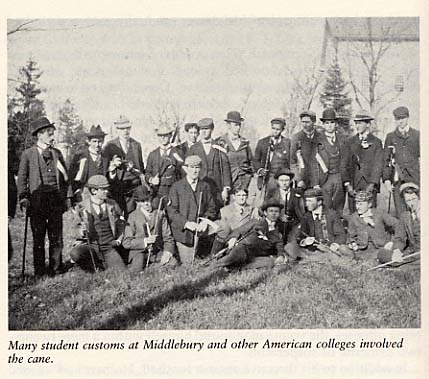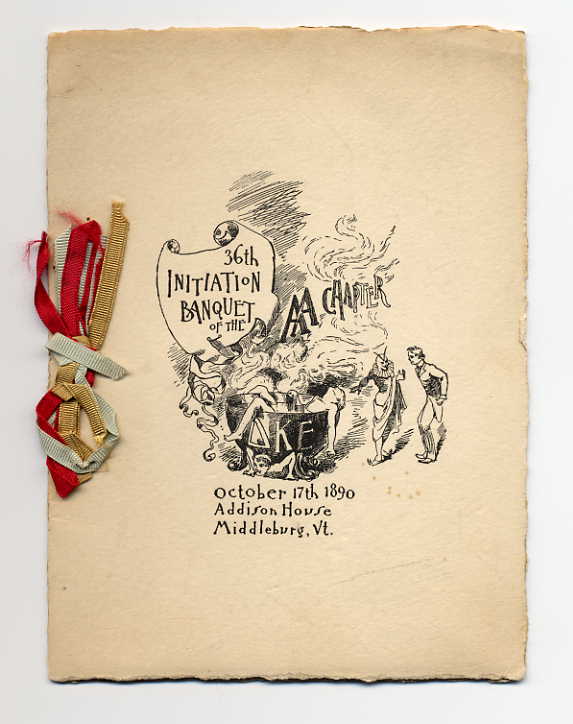|
|
Fraternities:
Influence Of
"The
'Greeks' were recognized as the aristocrats on the campus; the
rest of us did not count....Hazing of Freshman was common. The
Greeks were more inclined to be brutal in dealing with non-frat
men, and saw nothing reprehensible in ganging up on poor helpless
Freshman. In class scraps, theoretically it was Freshman against
Sophomores, or vice-versa, but in fact the Greeks saw to it that
the Greeks were the heroes of the fights."
-Gino A.
Ratti '07, "The Early Days of KDR," The Quill and
Scroll of Kappa Delta Rho (Stameshkin, The Town's College)
"I
remember my initiation into the fraternity. It was an
all-night affair that involved going to the cemetery and
scrambling in an open grave with another neophyte. After
that, we went on a long hike into the country, blindfolded.
Left alone, I had difficulty orienting myself. I remember
knocking on a door where there was a light. A man came
with a big dog and was ready to chase me. It was frightening,
but I finally got back home."
-Lawrence
J. Pierce '21, Reminiscences & Reflections
(Stameshkin, The Town's College
|

(Stameshkin, The Town's College)
| Fraternities
provided Middlebury students with more exciting and fulfilling
social and literary activities. The combination of fraternities
and athletics at Middlebury added moderation to the traditional
stern and religious atmosphere of the school. Student life
strayed from its sober ways to more hedonistic activities,
such as banquets, boat rides, group trips, and informal sporting
events. An increase in student disciplinary problems in campus
is evidence of the changing college atmosphere (Stameshkin,
181). Some common student rebellious acts include smoking,
drinking, playing cards and cutting class. |

| A traditional
invitation to a fraternity banquet, 1890. (Special Collection,
Starr Library) |
| The growing popularity
of fraternities at Middlebury College overshadowed other groups
active on campus in the 1850s and 1860s, most notably the
Philomathesian
society (Middlebury's traditional literary organization
for students). Over 80 percent of Middlebury men were members
of a fraternity between 1965 and 1905 (Stameshkin, 262). Students'
loyalty to their fraternity brothers and a strong sense of
belonging fueled competition between fraternities. These competitive
feelings dominated college life, even more so than interclass
divisions (Stameshkin, 177). Fraternity ties cut across class
lines and divided students into small cliquish clans. |
| Towards the end
of the ninteenth century, the fraternities facilitated the
rise of the sorority system at Middlebury. In 1889, at the
recommendation of members of the Chi Psi fraternity, several
female students decided to organize Middlebury's first sorority.
Thanks to the help of the brothers, who "drew up a constitution
[and] planned an initiation ceremony," the Alpha Chi
sorority emerged onto the social scene in December, 1889 (Stameshkin,
264). Five "neutrals," who were not granted membership
to Alpha Chi, established the Pi Beta Phi sorority in 1893.
Despite the fact that there were four sororites on campus
by 1917, fraternities and other organizations continued to
be the dominant social organizations on campus. |
|
(Bain,
The College on the Hill)
|
|
|